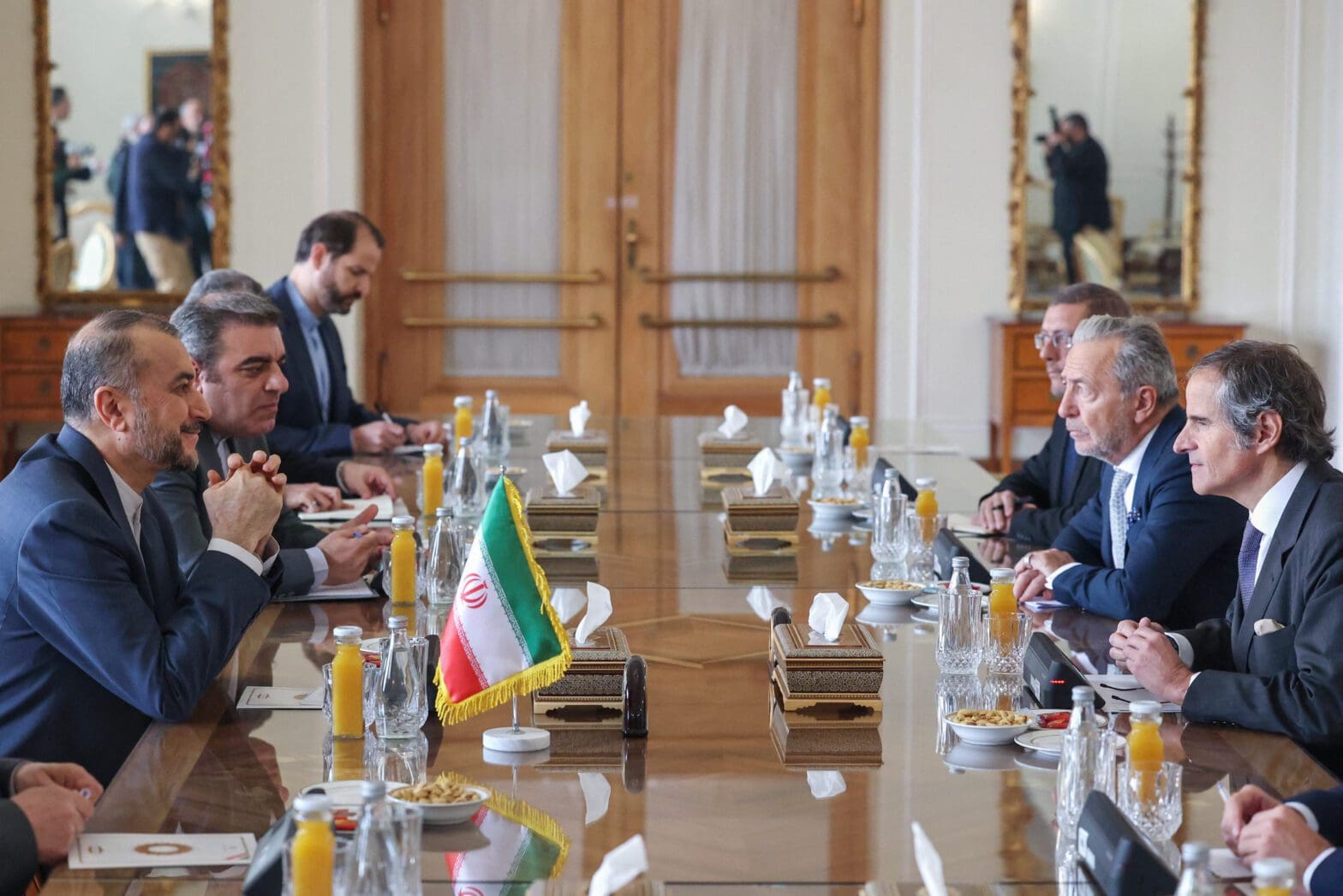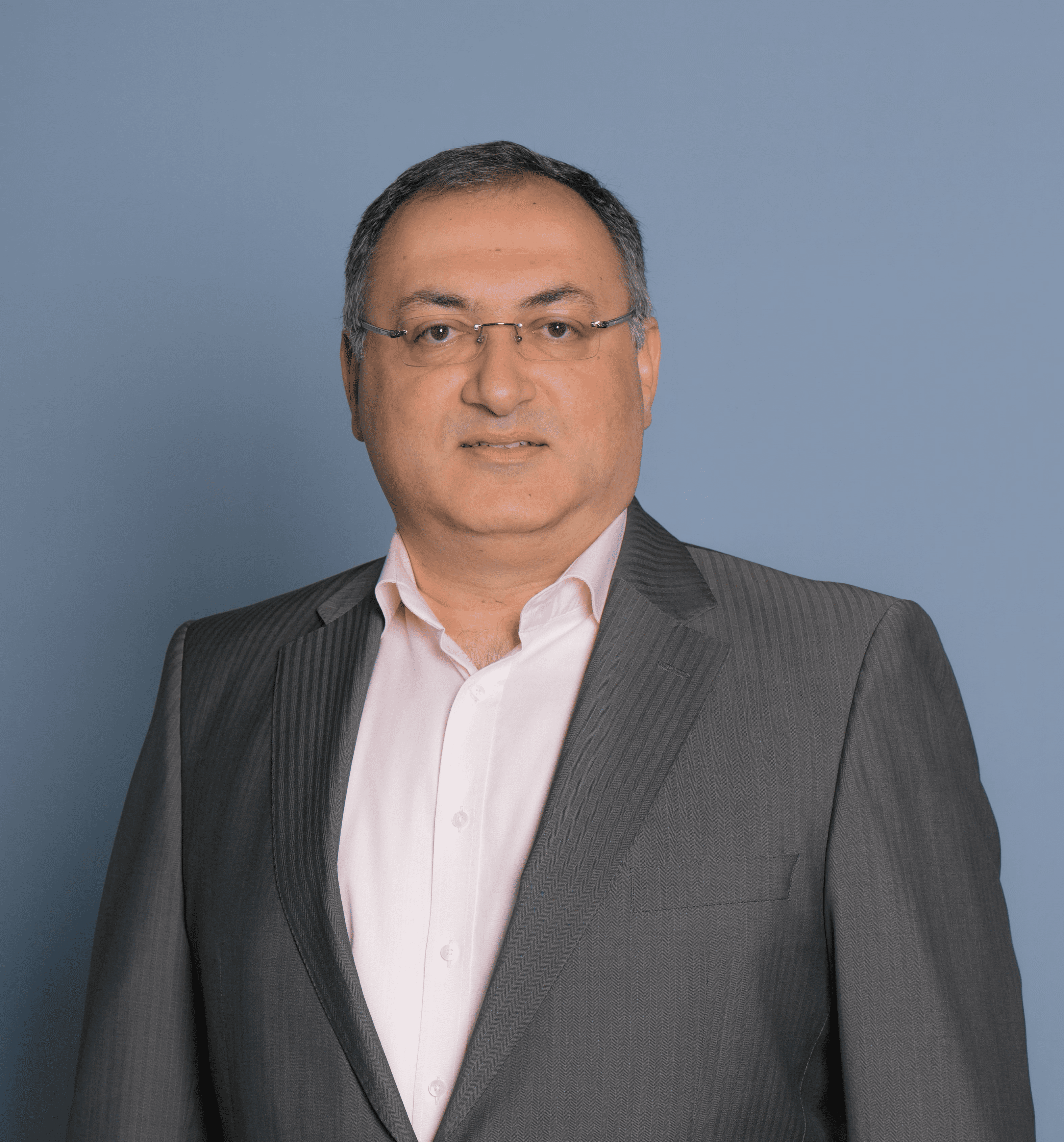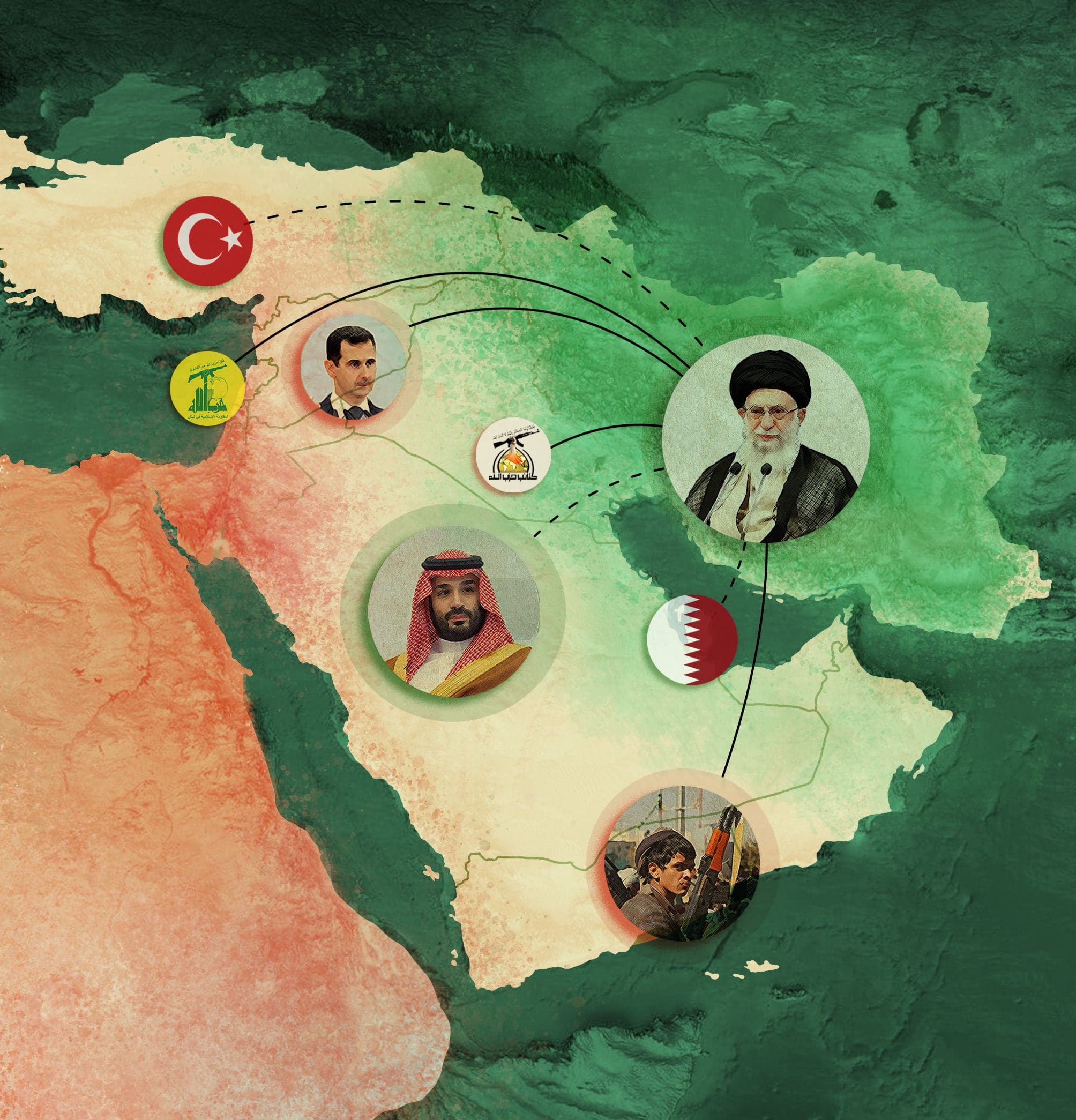
Iran and the Nuclear Agreement: What Lies Ahead?
April 2024
Introduction
In 2015, Iran, the European Union (EU), and the five permanent members of the United Nations (UN) Security Council plus Germany—a group known as the P5+1—signed the Joint Comprehensive Plan of Action (JCPOA).1 The deal imposed a stringent control and monitoring regime on Iran’s uranium enrichment levels to prevent the weaponization of the state’s nuclear energy program. In return, the UN removed sanctions that had been imposed on Iran in response to its non-compliance with requests from the International Atomic Energy Agency (IAEA) to access and monitor the country’s nuclear facilities.
While hailed as a breakthrough, the benefits of the easing of sanctions were limited. Due to Iran’s interventionist strategy in the Middle East of support for armed non-state actors, Washington continued to perceive Tehran as a sponsor of terrorism, maintaining a separate set of sanctions aimed at changing Iran’s behavior2 and possibly even attempting to instigate regime change.3 Under President Donald Trump, the United States withdrew from the JCPOA in 2018.4 In response, Iran gradually reduced its compliance—through phased increases in uranium enrichment—thereby reversing diplomatic gains from the deal.5
Reports of secret talks in 2023 between Washington and Tehran indicated a cautious push by President Joseph Biden’s administration to revive the JCPOA.6 However, efforts to negotiate a “JCPOA 2.0” face a number of interrelated barriers, including the recent escalation in the Middle East in the wake of Israel’s war on Gaza and the ascendancy of a hardline faction under President Ebrahim Raisi in Iran. This chapter will examine the interrelated geopolitical and ideological factors constraining efforts to revive the JCPOA and assess the prospects for the future of the agreement.
Ideology
The idea of “exporting the revolution” has served as a cornerstone of Iranian foreign policy for decades.7 Promoted under the banner of supporting mustaz’afin (“the oppressed”), the policy was operationalized through links with armed non-state actors, specifically Hezbollah in Lebanon8 and the Palestinian group Hamas.9 Iran also supported Shia groups in Iraq,10 Bahrain,11 and Saudi Arabia12 under the rubric of Islamic solidarity against injustice.
In the wake of the 1979 revolution, Washington and its allies in the region perceived Iranian foreign policy as interventionist and disruptive. This concern explains regional support for Iraq in the protracted 1980–1988 war with Iran, which left a profound impact on Iranian foreign policymakers and their strategic assessments. While some of its leaders, most notably President Mohammad Khatami,13 tried to break out of the Iran-versus-the-West mentality, that binary remains firmly at the core of political thinking in the country. President Raisi’s 2021 electoral victory further consolidated this hardline perspective. Raisi has criticized the JCPOA as an unacceptable compromise that undermined Iran’s revolutionary mission,14 and there is little indication that his views have changed.
Isolation
Iran has been a pariah state for more than four decades, despite many opportunities to break the cycle of mutual distrust and animosity with the United States. A significant opportunity followed the 2001 terrorist attacks on the United States. U.S. operations against the Taliban after September 11 aligned with Iranian interests.15 The window of opportunity, however, soon closed as neoconservatives in Washington put Iran in their sights as a target in the “Axis of Evil.”16 At the same time, Khatami’s conservative critics dismissed his efforts to reset relations with the West through a “Dialogue among Civilizations” as wishful thinking.
Another opportunity for a policy reset came in 2014, following the fall of Mosul to the Islamic State group’s (ISIS) factions in Syria.17 With its decidedly anti-Shia agenda, ISIS posed a significant threat to Tehran. In response, Iran urged mass mobilization against ISIS—a message that was echoed by Grand Ayatollah Ali al-Sistani in Iraq,18 whose fatwa led to the formation of the Popular Mobilization Forces (PMF).19 Subsequently, the PMF aided U.S.-backed Kurdish forces and the Iraqi national army in the 2017 liberation of Mosul.20 However, the alignment of U.S. and Iranian interests against ISIS did not ease the entrenched antipathy between the two countries. Instead, Iranian authorities interpreted ISIS as the product of a long-term U.S. strategy to undermine Iran.21
U.S. policy on Iran is informed by a combination of historical grievances—particularly the 1979–1981 hostage taking at the country’s embassy in Tehran22—and an assessment that Iran threatens Washington’s current interests. U.S. sanctions on Iran have been aimed at taming the republic’s revolutionary leadership. Iran has partially mitigated the sanctions’ impact by pivoting trade to Asian markets, notably China, but its economic growth and development remain stunted. The authorities also turned economic difficulties into a badge of honor—extolling the country’s “resistance economy”—coupling the glorification of isolation with an emphasis on self-sufficiency. For the Iranian armed forces, this has meant increased research and development in weaponry, such as drone technology.
“Look East” Policy
As relations between Washington and its global rivals Russia and China have deteriorated, Iran has found new opportunities to enhance its ties.23 The clerical leadership views the recent shifts in geostrategic alignments as advantageous in its dealings with Washington.24 Tehran signed a 25-year strategic agreement with China in March 2021, welcoming investments into the oil industry and railway infrastructure.25 These developments have caused Iranian authorities to hope that some of the severe impacts of sanctions could be mitigated. A similar dynamic is at work in relation to Russia. The alignment of Russian and Iranian interests in Syria proved crucial to the survival of President Bashar Assad’s regime. Tehran further proved itself as a reliable partner for Russia in the war on Ukraine.26
Forward Defense
The P5+1 designed the JCPOA to compartmentalize issues of concern, taking a piecemeal approach to the threat that Iran posed to regional security. Addressing Iran’s nuclear ambition was prioritized over deterrence of the country’s interventionism. Iran’s neighbors did not welcome divorcing the nuclear issue from the rest of Tehran’s regional policy, as they bore the brunt of the state’s interventions. Yet, the Obama administration insisted and, for a short period, this approach appeared to make progress. However, the landscape shifted after the Trump administration withdrew from the nuclear deal in 2018.
In the intervening years, Iran has doubled down on its asymmetrical advantage. It has consolidated its patronage of proxy allies,27 made significant advances in its ballistic technology,28 put a satellite in orbit,29 and increased the efficacy and deadliness of its drones.30 In sum, Iran has used the last decade to significantly enhance its capacity for regional power projection. Iran’s export of kamikaze drones to Russia point to the growth of this asymmetrical edge, further undermining the logic of compartmentalization.31
Iran has also pursued asymmetrical measures under the rubric of “forward defense.”32 Given the depleted state of its conventional military hardware, the regime has invested in ways to pre-empt threats to its borders. Iranian missiles are capable of reaching Israeli territory.33 Additionally, Hezbollah employs Iranian missile technology and has already demonstrated its willingness to oblige Tehran.34 The JCPOA was not designed to address these factors, and it is next to impossible for Washington to ignore them in any future talks.
Revisionist Foreign Policy
Exporting the revolution may have declined in importance in Iranian foreign policy, but the fundamental concept of resistance against an “unjust” U.S.-dominated international order has not faded. While failing to articulate an explicit alternative to the liberal international order, Iran advocates for some key principles: freedom from U.S. “arrogance” and “bullying”; “justice”; and respect for national sovereignty and cultural traditions.35 Tehran’s perspective is informed by a history of power imbalance between Iran and the United States, predating the 1979 revolution. Clerical leadership in that period lamented the steady encroachment of Western culture and values in Iran and rallied against “Westoxication.” This view is now writ large in the Iranian worldview and foreign policy.
Iran tends to partner with nations that share its antipathy toward the United States, such as Syria and Venezuela. But the prospect of mounting a plausible challenge to the Unites States and the liberal international order gained credibility only after Russia and China hardened their positions. Both see the United States as a hegemon and have sought a counterweight in multilateral agencies, such as the Shanghai Cooperation Organization (SCO) and the Brazil, Russia, India, China, and South Africa (BRICS) bloc. Iran’s admission into the SCO in 2023, and BRICS the following year, has bolstered revisionist thinking in Tehran.
State Suppression of Dissent
In September 2022, Mahsa Amini died in custody after being arrested by the religious police for the alleged crime of not observing the compulsory hijab. Her death sparked a nation-wide protest movement, as chants of “Women, Life, Freedom” and “Death to the Dictator” rang through the streets of Iran’s major cities for months. Despite the regime’s violent suppression of protests, demonstrations continued months into 2023.
The regime’s heavy-handed response shocked the Iranian diaspora and international observers.36 Many officials in Western capitals spoke publicly about accountability for the perpetrators of the violence.37 As such, a year after the protests, talks on a renewed JCPOA present bad optics for the United States and its Western allies. Many observers in the West have noted that negotiating with Iran on its nuclear program at this juncture would be tantamount to whitewashing the regime’s atrocities.38
Conclusion
The Biden administration had hoped to repair the damage that President Trump inflicted on the JCPOA. However, since 2015, Iran realized that even with the sanctions relief offered under the nuclear agreement, other sanctions remaining in place—especially those on the financial sector—seriously diminished the deal’s benefits. Meanwhile, Iran has expanded its ties with China and Russia, eroding the urgency of securing a deal to end Iran’s isoltation. At the same time, it is becoming increasingly difficult for Washington to ignore the security threats Iran’s asymmetrical assets pose for the region and to maintain an approach that compartmentalizes nuclear talks without addressing Tehran’s regional aspirations. As such, efforts to revive JCPOA remain bleak.
Please note that this dossier was compiled before Iran’s drone and missile attack on Israel on April 13. The strike marked Tehran’s first direct attack on Israel, framed as a retaliation for the Israeli strike on the Iranian consulate in Damascus on April 1. This dossier provides insights into Iran and its policy thinking. The analysis does not reflect recent developments.
The opinions expressed in this chapter are those of the author and do not necessarily reflect the views of the Middle East Council on Global Affairs.

